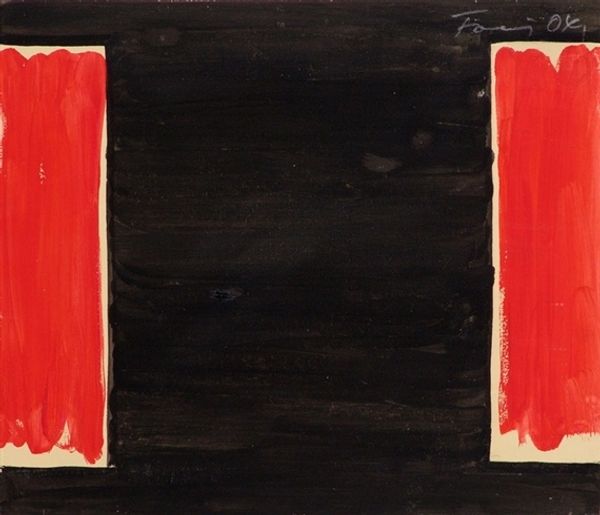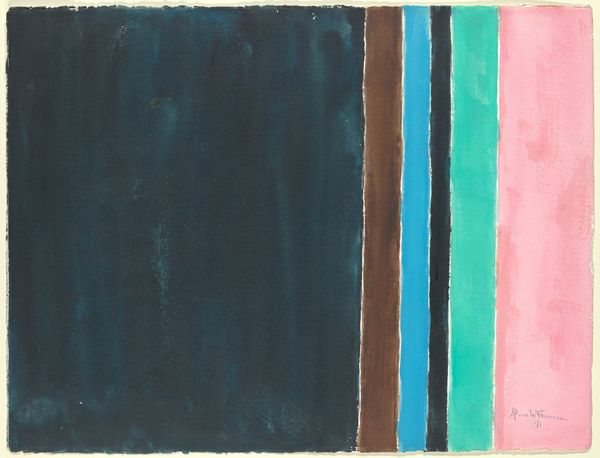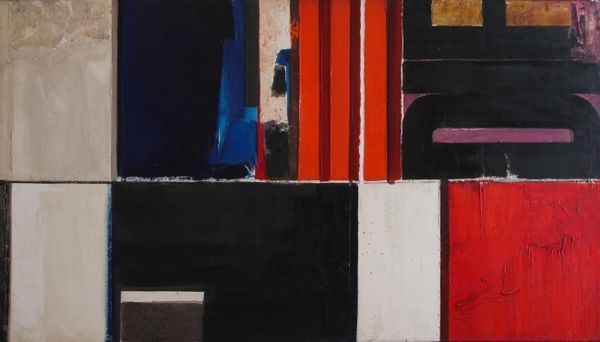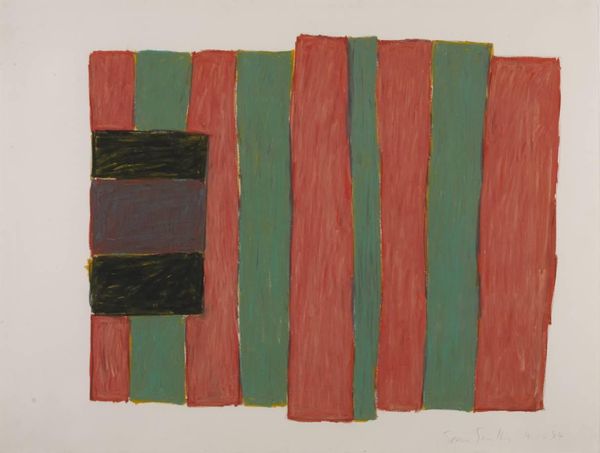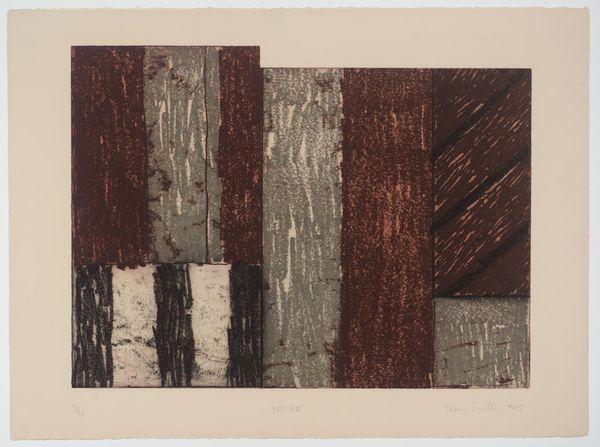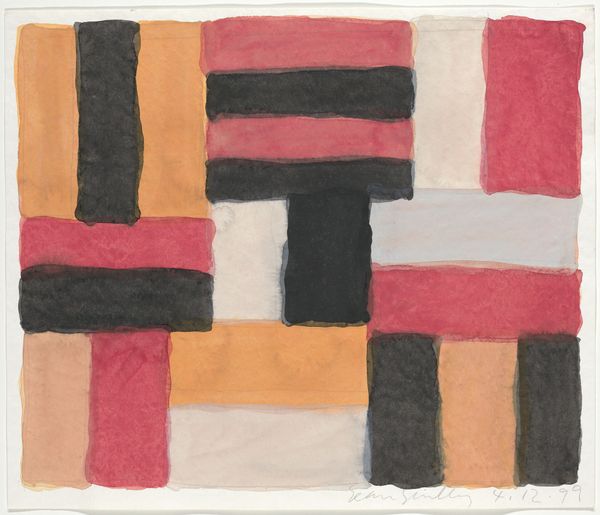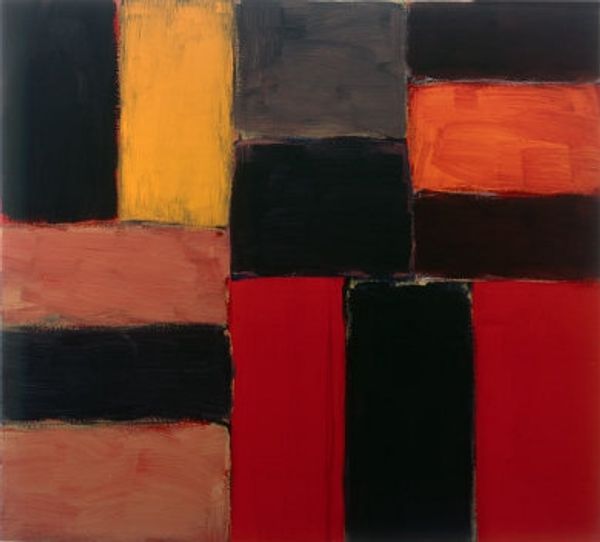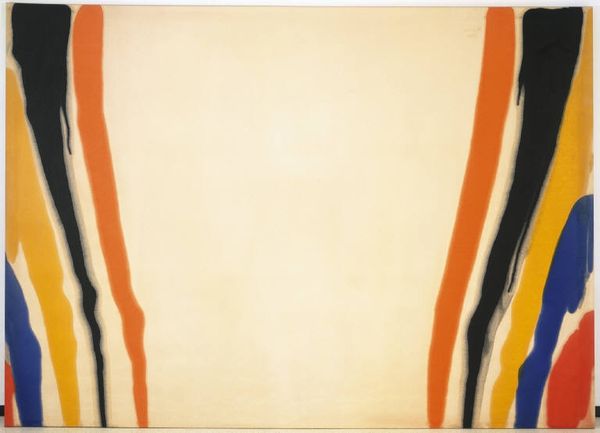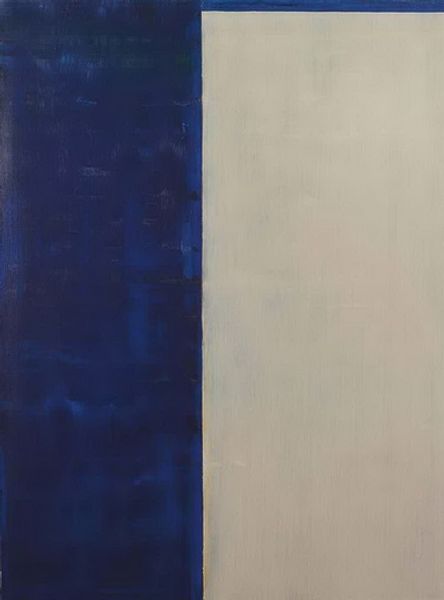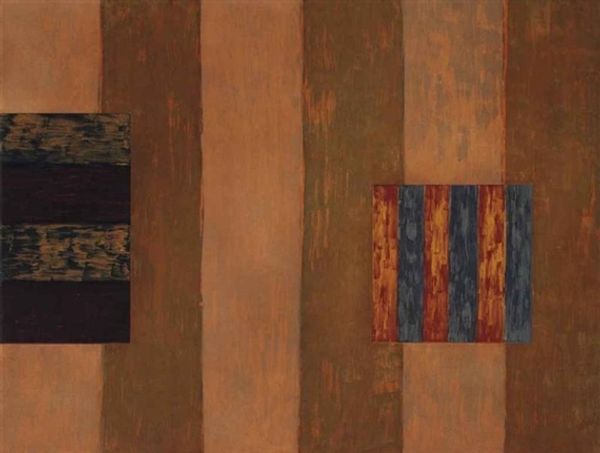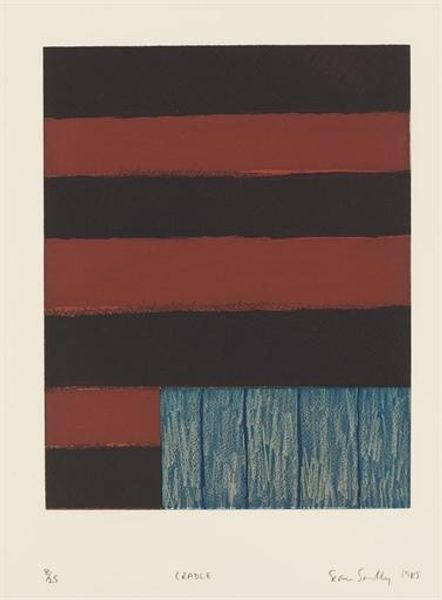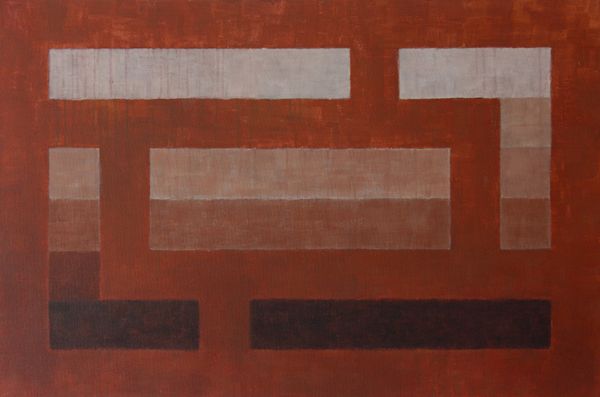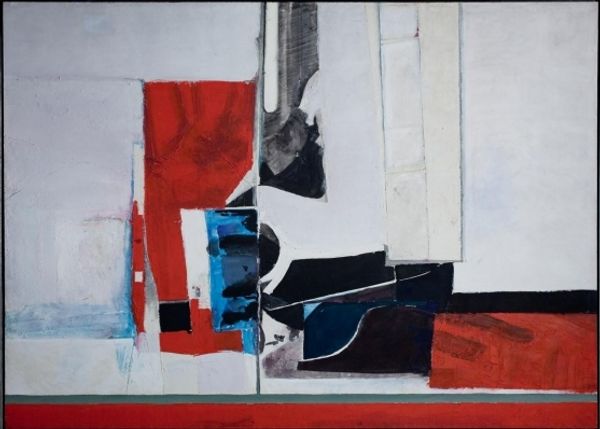
Dimensions: support: 2590 x 3200 x 240 mm displayed: 2590 x 3200 x 240 mm
Copyright: © Sean Scully | CC-BY-NC-ND 4.0 DEED, Photo: Tate
Editor: So, this is Sean Scully's "Paul," a large-scale painting at the Tate, composed of three panels with bold stripes. It feels very direct, almost confrontational. What do you see in this piece? Curator: I see Scully engaging in a dialogue with the legacies of Minimalism and Color Field painting, but with a crucial difference. How do these seemingly simple forms speak to the complexities of identity, perhaps through the architecture of social structures? Editor: That's interesting! I hadn't considered the social aspect, I was mainly focusing on the colors. Curator: Think about the deliberate imperfections, the visible brushstrokes. Aren't they a rejection of the cold, impersonal aesthetic often associated with Minimalism, inviting a more human, embodied experience? Editor: I see what you mean, it's like a push and pull between structure and expression. Curator: Exactly! It’s a negotiation between order and chaos, reflecting perhaps the tensions inherent in our own identities and societal constructs. Editor: I’ll never look at stripes the same way again! Curator: Hopefully, you’ll consider how abstraction still connects to lived experiences.
Comments
Join the conversation
Join millions of artists and users on Artera today and experience the ultimate creative platform.
tate 6 months ago
⋮
Around fifteen years ago Scully began to simplify the often complex patterns in his work up to then. Where lines of different direction were included they did not cross but simply abutted. In the early 1980s he began to make paintings with relief elements. He said, 'I liked the idea of looking at a painting that you could not look at just from the front but had to move around.' The triptych form of this work was deliberately chosen. Scully was very aware of the religious associations of this format. It also presented him with the possibility of 'putting something in the middle.' 'Paul' was painted about a year after the artist's son died, and was dedicated to his memory. Gallery label, September 2004

